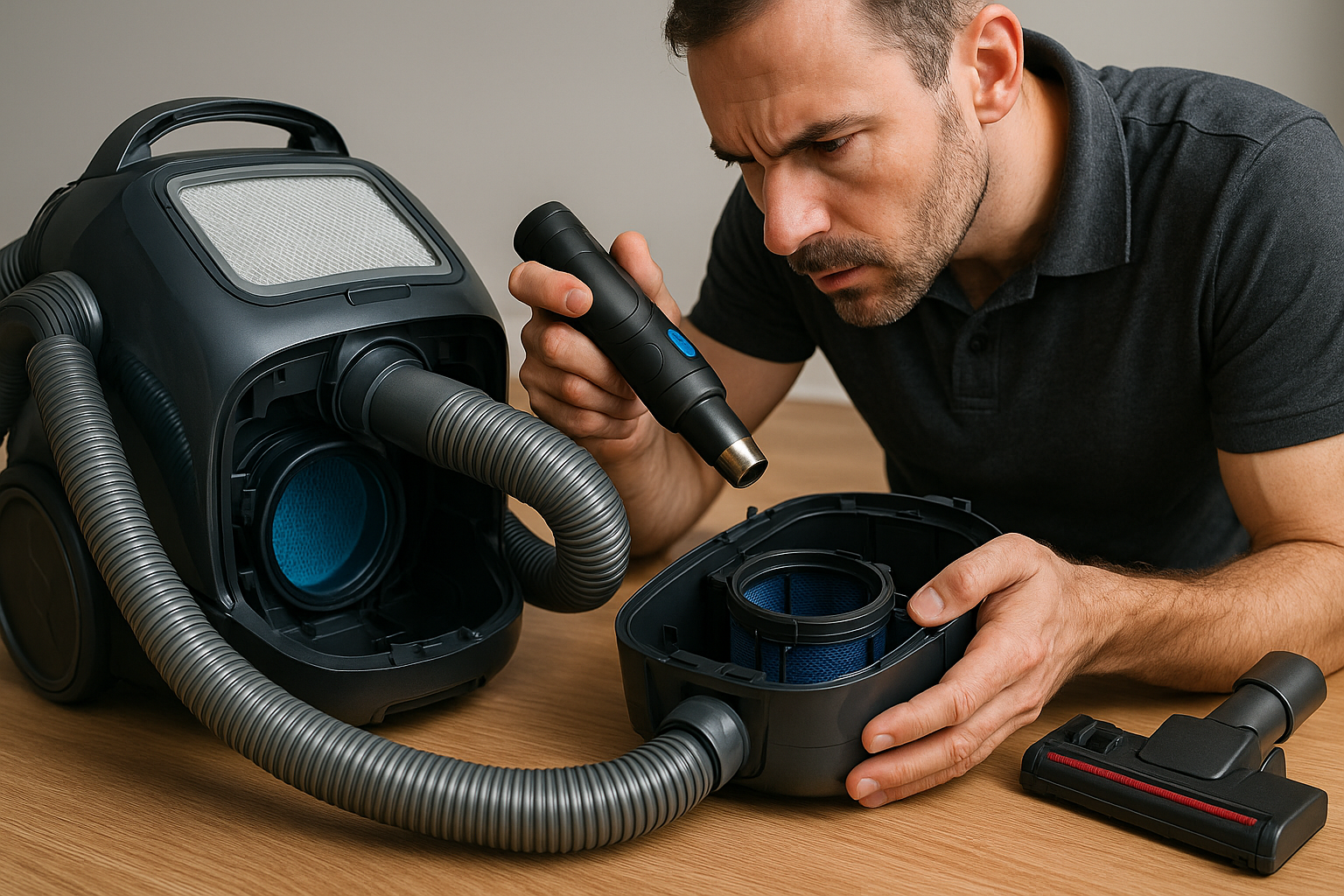
As a cleaning technology specialist, one of the most frequent issues I encounter is suction loss in home vacuum cleaners. It’s a widespread problem—but one that is often preventable with proper maintenance.
Start with the Basics: Filters, Bags, and Airflow
In over 80% of service cases, the root cause of suction loss is a clogged filter, a full dust bin, or an obstructed hose. According to Best Vacuum Expert, suction power relies heavily on unrestricted airflow. Replacing or washing filters and emptying the bin can restore full performance in just minutes.
Evaluate Hose Integrity and Suction Settings
Hoses and brush rolls often go unchecked. Blockages, leaks, or entangled hair can significantly reduce vacuum efficiency. Better Homes & Gardens offers a detailed checklist for identifying such issues. In addition, ensure the vacuum is not set to eco or quiet modes, which automatically lower suction.
When to Investigate Mechanical Failures
If your unit still struggles after basic checks, it may be time to inspect belts, fan blades, and motor seals. These components degrade with use and affect suction. Homes & Gardens explains how replacing worn belts or clearing motor obstructions can significantly improve airflow.
Professionally, I recommend choosing a vacuum cleaner that incorporates all essential functions: suction power, filtration, weight, noise, attachments, runtime, corded, cordless, portability, wet, dry. Together, these elements ensure long-term cleaning performance.
For advanced maintenance guides and independent reviews, visit www.lxvacuum.com

















